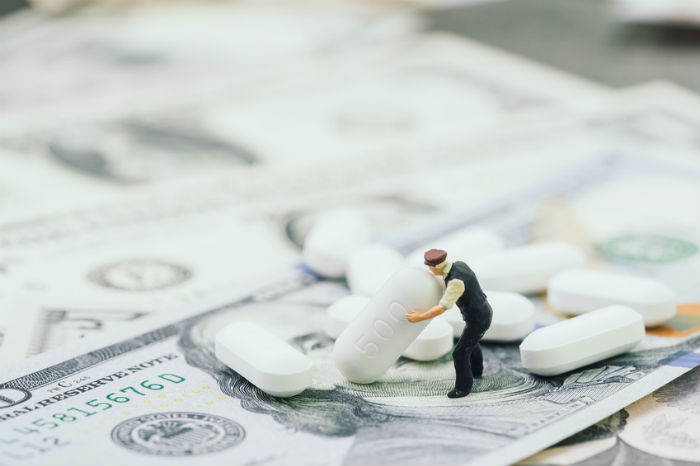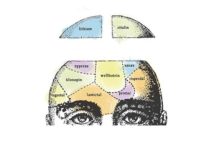In a new article published in the Annals of Internal Medicine, oncologist and public health researcher Aaron Mitchell of the Memorial Sloan Kettering Cancer Center and his colleagues examine how payments from the pharmaceutical industry affect physician prescribing patterns. They found a consistent association between payments and prescribing as well as data pointing to payments as a likely cause of changes in physician prescribing behavior.
The authors conclude that industry payments can harm patients by leading to the overuse of lower-value drugs. They call on the medical community to end the acceptance of industry payments. They write:
“These analyses included several types of prescribing decisions and found that physicians who received industry payments were more likely to prescribe drugs made by the companies that had paid them than alternatives, had higher prescribing costs and prescribed a higher proportion of brand-name products over generic alternatives.”

There has been a growing suspicion of pharmaceutical industry payments to researchers and physicians as more studies have been published pointing to corrupt practices and their detriment on public health. From studies designed to defend antipsychotic use rather than investigate their actual long term effects to less effective new drugs receiving FDA and EMA approval, many authors have highlighted corruption similar to what Mitchell and his colleagues are pointing to in their new meta-analysis.
Some researchers are also concerned that industry-sponsored trials and payments could corrupt every step in the research process. Critics of the relationship between pharmaceutical industry payments and research have pointed to a process where pharmaceutical companies identify physicians with tremendous influence and approach them as “key opinion leaders” (KOL). They subsequently leverage that influence to increase the distribution of their drugs and ghostwrite articles published under the KOL’s name, downplaying the dangers of medications while exaggerating the benefits. Many physicians oppose these practices and admit that their existence undermines the idea of evidence-based medicine as a whole.
This brand of corruption can adversely affect public health in many ways. When studies are designed to defend a specific medicinal intervention, patients may be exposed to potentially long-lasting side effects, and the field can ignore new, possibly better alternatives. We have also seen a positive correlation between pharmaceutical industry gifts to physicians and costlier prescribing practices.
In this study, Mitchell and his colleagues seek to place prescribing behaviors under a microscope to better understand the relationship between industry payments to physicians and observable changes in physicians’ prescribing practices. This study reinforces many others questioning the involvement of the pharmaceutical industry in the prescribing process.
The current research is a synthesis of 36 studies, including 101 individual analyses examining the pharmaceutical industry’s payments and prescribing of that industry’s products. Each study selected for inclusion was screened by 2 reviewers independently and selected based on the following criteria: full-text versions of the research were available on one of 5 databases (MEDLINE, Embase, the Cochrane Library, Web of Science Core Collection, and EconLit), 2 independent reviews were available in full-text form on the same databases, the research employed experimental or observational methods, was not an opinion piece or review, and was focused mainly on physicians.
Mitchell and his colleagues examined the association between payments and prescribing by assigning each analysis a value of positive, inverse, or null. An analysis was assigned a positive value when payment was associated with increased prescribing, a negative value when payment was associated with decreased prescribing, and a null value when there was no statistically significant association. The current research then classified each study (collection of analyses) containing only positive analyses, only inverse or null analyses, or both positive and null/inverse analyses.
Of the 36 studies classified in the current research, 30 contained only positive analyses, meaning each analysis revealed a positive association between payment and prescribing. The 6 remaining studies included at least 1 analysis that indicated a positive association and 1 that indicated a null association between payment and prescribing. 89 (88%) of 101 individual analyses indicate a positive association between payment and prescribing, whereas 12 were null.
No analysis found an inverse association between payment and prescribing. In other words, an overwhelming majority of analyses found a positive association between pharmaceutical industry payments made to a physician and that physician prescribing more of the industry’s product.
The authors point to the difficulty for some of the data to account for the causal relationship between payments and prescribing, i.e., do payments cause physicians to prescribe more, or does prescribing more cause the pharmaceutical industry to reward the prescribing physician with payments. However, 9 of the 36 studies that included additional data about the temporal relationship of payment to changes in prescribing behavior all indicate a causal relationship in the direction of payments causing prescriptions.
Further, all 3 studies that included a time series analysis found a tremendous increase in prescriptions following each individual payment.
“Taken together, our results support the conclusion that personal payments from industry reduce physicians’ ability to make independent therapeutic decisions and that they may be harmful to patients,” the researchers explain. “The medical community must change its historical opposition to reform and call for an end to such payments.”
The authors acknowledge several limitations to the current research. The design was observational, making inferences about causal relationships more tenuous than an experimental design. There was a significant risk of bias in that much of the data was calculated by 2 reviewers. While the risk of bias ranged from moderate to serious, the authors indicate that most of the risk of bias comes from mistakes in the database used to store information on pharmaceutical industry payments to physicians.
According to the authors, these mistakes in the database should make the null hypothesis more common, rather than the positive association between payment and prescription observed. This research mainly utilized data collected through Medicare, limiting its generalizability to the uninsured or privately insured.
Mitchell and his colleagues highlight a disturbing trend of many physicians likely basing their prescription decisions on payments from pharmaceutical companies rather than patient welfare. This corruption results in real harm to patients who are likely receiving lower-value drugs due to well-placed financial payments on behalf of the drug manufacturer. The authors insist that this practice must end and that the medical community needs to be responsible for this reform.
****
Mitchell, A. P., Trivedi, N. U., Gennarelli, R. L., Chimonas, S., Tabatabai, S. M., Goldberg, J., Korenstein, D. (2020). Are Financial Payments from the Pharmaceutical Industry Associated with Physician Prescribing? Annals of Internal Medicine. doi:10.7326/m20-5665 (Link)















I think physicians would prescribe no matter if paid or not and I think
the main reason being because they have nothing in their arsenal and Pharm
gives them that safe out. So even if a client gets harmed or dies by drugs,
everyone is insulated and can deny what the drugs in fact do.
It became the norm and legal for pharm to make insane claims, and doctors
happily ascribe to pharm for lack of actual science. The drugs are pumped out way before
the cause is identified, or the causes are misrepresented.
Most of healthcare is experimental, with much injury. Emotional and physical burdens
result directly from lack of doctor and pharm honesty about lack of knowledge.
Report comment
Mr. Sears,
I have found advising clients to simply research their prescribers on ProPublica’s “Dollars for Docs” can shine a light when attempting to understand the questions that begin with “Why THAT (debilitating, ineffective, damaging, inappropriate, etc) drug?”
It provides crystal-clear clarity & can help arm a client or advocates with fundamental tools when dealing with the dangerous behaviors of behavioral specialists.
The ‘influence’ is real…& despite the occasional tepid ‘acknowledgements’ by the APA…the industry has NO plans to curb it.
Why should they? (Duplicate)
Report comment
“acknowledgements” lol. Basically they have to be raked over the coals to admit to anything. They wait until the last second. They meet in that boardroom, have their language experts with them. Hmm guys, how do we address this.
Must be funny sight. Grown men and women, locked behind doors to come up with alibis.
Report comment
Mr. Sears,
I have found advising clients to simply research their prescribers on ProPublica’s “Dollars for Docs” can shine a light when attempting to understand the questions that begin with “Why THAT (debilitating, ineffective, damaging, inappropriate, etc) drug?”
It provides crystal-clear clarity & can help arm a client or advocates with fundamental tools when dealing with the DTO- dangerous behaviors to others-of ‘behavioral specialists’.
The ‘influence’ (open greed) is real…& despite the occasional tepid ‘acknowledgements’ by the APA posing as insight…the industry has NO plans to curb it.
Why should they?
Report comment
I’d like to better understand exactly how these payments to doctors (aka bribes) are made. Does the doc just open up the mail one day and there’s a check from X Pharma Company? What does the cover letter, if any, say? Is an offer made by phone or mail with a blatant offer that “if you prescribe X for Y, we will send you a check for Z”?
This practice should be illegal, full stop.
Report comment
Miranda, My ‘lived’ experience & subsequent research informed me that pharma rep relationships (grooming) include generous samples, helping prime the pump for prescribing. I experienced it first-hand.
Pharma in-house sychological assessments of what particular doctor’s are most likely to be influenced by, i.e…theatre or sporting event tickets, fine dining, travel, or cash (characterized as ‘consulting’ or ‘research’ fees)..are done with trained input from field reps.
Also, sub-contracting data collectors who purchase (legally!) pharmacy prescribing metrics, measuring the efficacy of inducements…high prescription writers are rewarded, low output offices are targeted with different strategies….or pressured.
No detail is overlooked and resulted in the massive boom in psych-drug sales (#1) since the late 90’s/early aughts following the infamous DSM-IV.
They ‘create’ a demand using prescribers as willing customer ‘influencers.
The fact that ‘trust’ is inherent in the sensitive patient/doctor relationship is, of course, massively beneficial to all but the client.
Oh well.
Report comment